Beijing: The Forbidden City
The former Imperial Palace is a huge complex of buildings occupying about
100 hectares (250 acres) in the centre of Beijing. Completed in 1420, the
buildings have been restored several times since, but the basic design and
layout have not changed.
|
| The main (south) entrance, from Tian An Men square. |
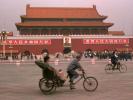
|
|
| A street outside the Imperial Palace. |
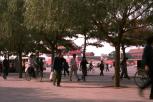
|
|
| |
Inside the Forbidden City
The best explanation I have read of the Imperial Palace's attraction
is by an American traveller, Brian Schwartz: "The scale is monumental but never oppressive,
the design symmetrical but not repetitive. There is a sense of
balance between the buildings and the spaces they surround."
|
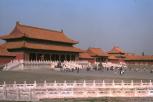
|

|

|

|
| |
The Temple of Heaven
|
|
A "temple" in China is not normally a single building, but an area in which
there may be several structures, linked by paths. This building is not the Temple
of Heaven, it's in the Temple of Heaven. The design dates from 1420,
but the present building was built in 1889, from the original plans,
after the original one was destroyed by a fire.
| 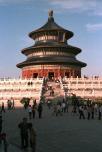
|
| |
The Summer Palace
Summer is unpleasantly hot in Beijing, so the emperors used to spend
part of it at the Summer Palace, in the hills to the north-west
of the capital. There is a lake within the grounds;
pavilions overlook the lake, and there are shaded walkways along the shore.
|
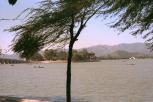
|

|
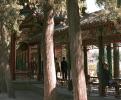
|

|
| |
Suzhou
|
|
Suzhou is an old city, founded about 600 BC, and is very interesting to walk around.
The Grand Canal connecting Hangzhou to Beijing (completed in 610 AD and still, incidentally,
the longest canal in the world - 1795 km in length) runs through it, and is connected
to several smaller waterways within the city.
|
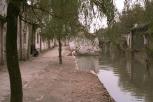
|
|
Suzhou has long been famous for its gardens. A Chinese garden is an
arrangement of rocks, plants, pools, and pavilions. The circular
gap in a wall, here, is called a "moon gate".
|
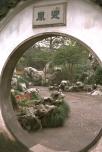
|












